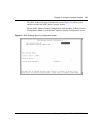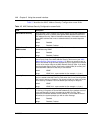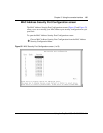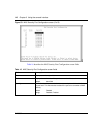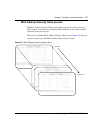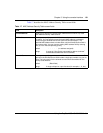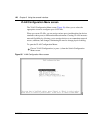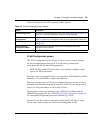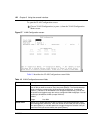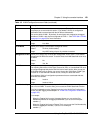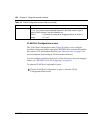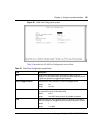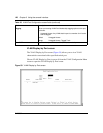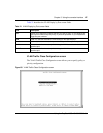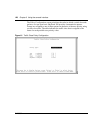
Chapter 3 Using the console interface 121
Using the BayStack 380 10/100/1000 Switch
Table 18 describes the VLAN Configuration Menu options.
VLAN Configuration screen
The VLAN Configuration screen (Figure 57) allows you to create and assign
VLAN port memberships to unit ports. You can create port-based and
policy-based VLANs for the following purposes:
• IEEE 802.1Q port-based VLANs allow you to explicitly configure switch
ports as VLAN port members.
When you create a port-based VLAN, you assign a Port VLAN Identifier (PVID)
manually, or use Auto PVID to assign it automatically.
When you configure ports as VLAN port members, they become part of a set of
ports that form a broadcast domain for a specific VLAN. You can assign switch
ports as VLAN port members of one or more VLANs.
You can add or remove port members from a VLAN in accordance with the
IEEE 802.1Q tagging rules. See “IEEE 802.1Q VLAN workgroups” on page 55
for a description of important terms used with 802.1Q VLANs.
You can also use this screen to create and to delete specific VLANs, to assign
VLAN names, and to assign any VLAN as the management VLAN.
Table 18 VLAN Configuration Menu options
Option Description
VLAN Configuration... Displays the VLAN Configuration screen (see “VLAN Configuration screen” on
page 121). This screen allows you to set up VLAN workgroups.
VLAN Port
Configuration...
Displays the VLAN Port Configuration screen (see “VLAN Port Configuration
screen” on page 124). This screen allows you to set up a specific switch port.
VLAN Display by Port... Displays the VLAN Display by Port screen (see “VLAN Display by Port screen”
on page 126).
Return to Switch
Configuration Menu
Exits the VLAN Configuration Menu screen and displays the Switch
Configuration Menu screen.
Traffic Class
Specifies the traffic class, either policy or priority.



